I recently picked up an eight year-old black pine growing in an Anderson flat. It had grown in the ground for several years and had been in the flat for the last one to two years.
8 year-old black pine
As you can see from the photo above, most of the vigorous growth is located far above the lower part of the trunk – the part I’ll use to create a small to medium sized bonsai.
Trunk of the future bonsai
Fortunately, there are a number of small shoots along the lower part of the trunk that can be used for future primary branches. To ensure these branches gain vigor, I reduced the more vigorous shoots above.
After cutting back the more vigorous growth and reducing the leader
It was also time to remove the section of trunk that died back after pruning last year. This growth had been used to thicken the lower part of the trunk. By cutting back to a smaller shoot, the grower was able to create taper and add interest to the trunk line. Here’s a closeup of the section to be removed.
The original trunk line
After reducing the trunk line to a small stub
The next thing I wanted to address was the tree’s health. The tree has been growing in a mix of expanded and unexpanded perlite. I wanted to repot the tree into a mix of akadama, lava and pumice.
I first removed the roots around the perimeter of the rootball and then bare-rooted half of the remaining rootball. The perlite fell away easily.
After reducing the rootball
After bare-rooting half of the rootball
I planted the tree in a colander as I want to encourage vigorous growth over the next few years while I develop the primary branches.
After repotting into a colander
And here’s a closeup of the lower part of the trunk.
The lower part of the trunk
I don’t know exactly where the apex will be at this point. For now, the focus is on developing healthy roots and strengthening existing shoots. I’ll revisit the tree towards the end of spring to see how it is doing. I expect to begin decandling the following year.
Subscribe to Bonsai Tonight
New Posts Delivered Every Tuesday and Friday

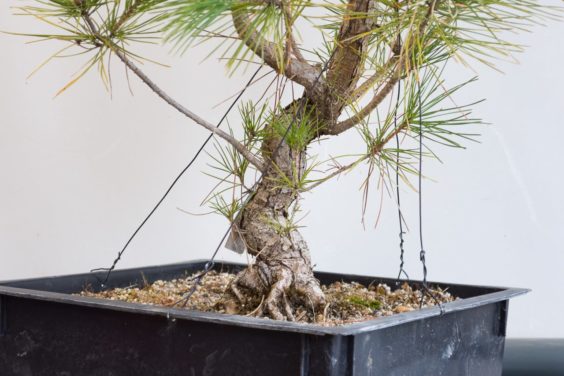
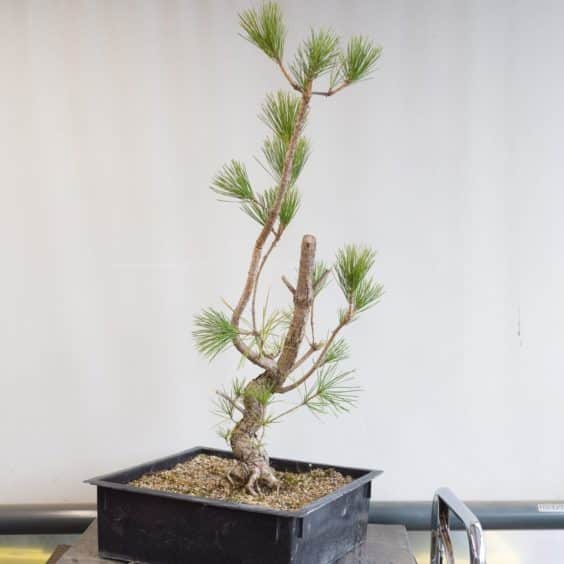
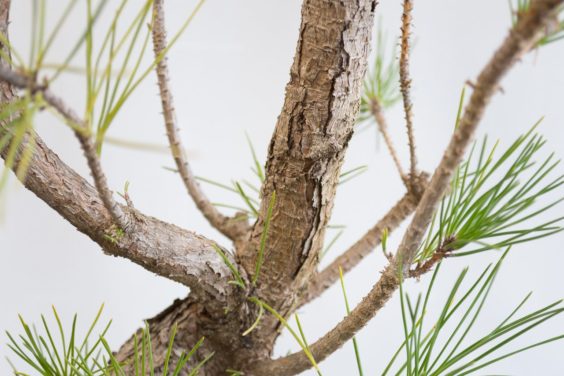
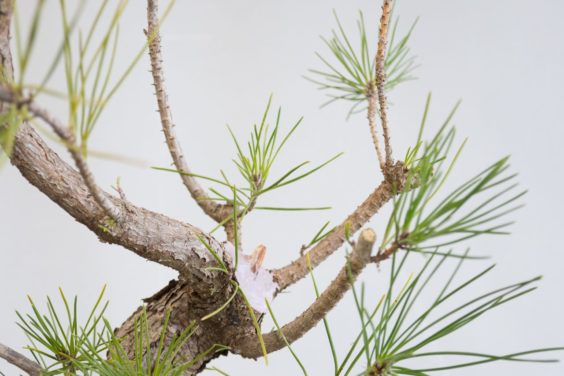
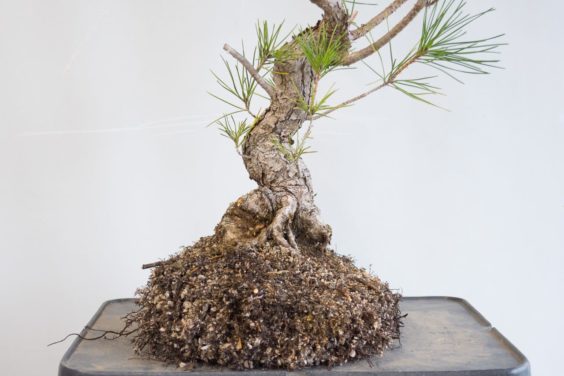
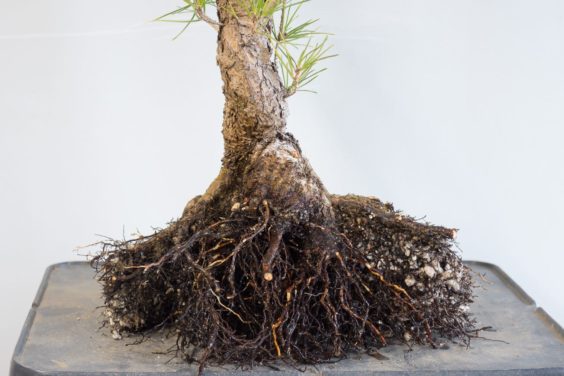
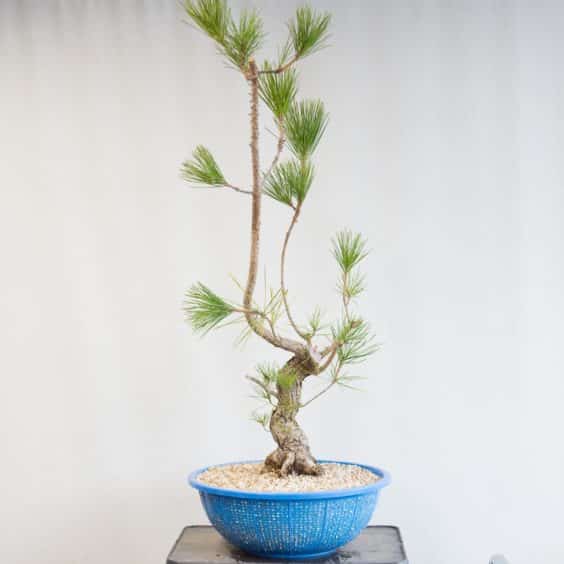
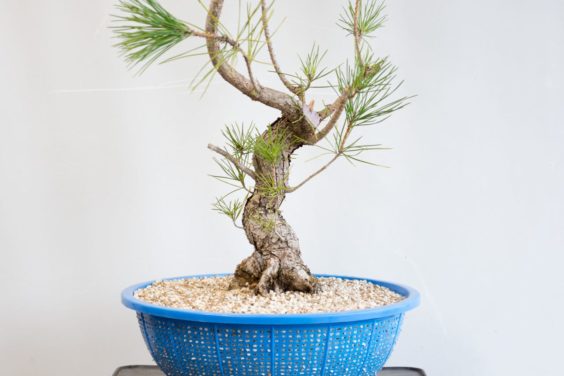
Jim Stimmel says
Why do you use a colander when you pot up the tree after pruning vs a training pot?
Jonas Dupuich says
Very good question Jim – colanders are great for encouraging root growth on pines and many of my pines at this stage of development are also in colanders. Keeping similar trees in similar pots makes it easier to water as the trees are more likely to dry out at a similar rate.
Lani says
This tree was a good example of when and why you should cut back at this stage in its development. I guess I was surprised to not see more roots considering it was planted in an Anderson pot. So that must be because of planting in straight perlite. Was that an experiment to see the effects of growing JBP in different soil types?
Jonas Dupuich says
Hi Lani – that’s a good question for the grower. While perlite is a good amendment, it’s not as effective on its own or with little akadama. I don’t know if this was a conscious decision or the result of what soil was on hand on the day the tree was planted.
Trent says
Jonas, when bare rooting only a portion of the football at a time, how do you manage the watering so that both halves get what they need? I’ve found this especially difficult when the previous soul is potting soil from a nursery or dirt when it is collected material. One half will stay wetter longer but the half in inorganic will dry out a lot faster. How have you handled those types of situations?
Trent says
Root ball* sorry it autocorrected to football haha
Jonas Dupuich says
Hi Trent – great question! Theoretically, it’s very difficult to meet a tree’s watering needs when soils differ in different parts of the pot. In practice, however, I find it’s usually not too hard to tell whether or not the tree needs water on any given day. Sometimes I’ll check the roots in the old and new soils and water whenever at least one half needs water. In general, I’m most concerned with keeping the roots in the new soil happy.
Alessandro says
Hi Jonas, how many years are necessary, in your opinion, to see a first well-formed branch?
Thank you, Alessandro
Jonas Dupuich says
Fun question! If I start with one of the larger branches higher up on the tree, the first branch could look OK in 5 years. If I start with one of the small lower branches, I’d expect it to take a couple of years longer. I’ll have a better idea when I know which buds will become primary branches and I have a better idea about the apex.
Leonard Bell says
Jonas,
Upon closer inspection of the area that you left with a small stump I notice it still has 4 branches growth sprouting out relatively close. Shouldn’t you be concerned about the swelling and possible reverse taper ( which will be impossible to correct )?
Jonas Dupuich says
Great question Leonard – I wanted to keep all four for now to help close the wound. I plan to remove at least two of these next year. Because the buds aren’t too large on any of these branches, I don’t expect a lot of growth from them this year so I don’t worry about swelling. Were they all growing vigorously I’d be more concerned and would likely remove one or two at this point.
Lani says
The side you bare-rooted, will that encourage that side of the nebari to thicken, or will the opposite side – in the old soil- be encouraged to develop better?
Jonas Dupuich says
Good question. I don’t expect either side to thicken dramatically but I do expect more overall root growth on the side that was bare rooted.